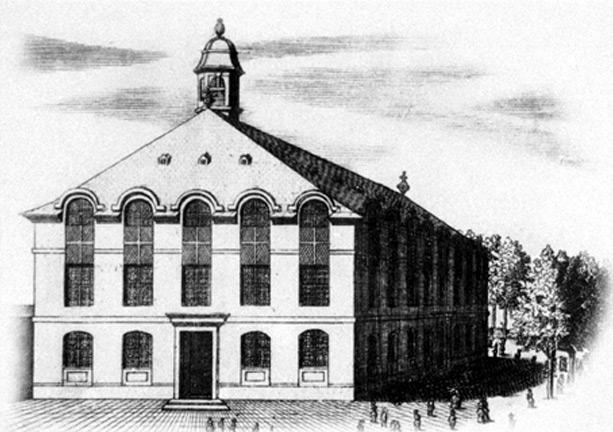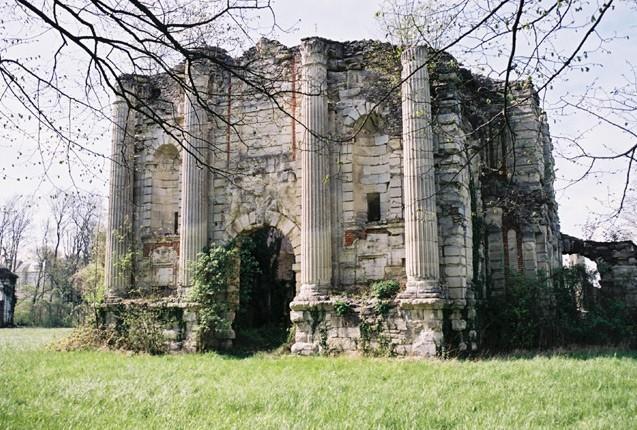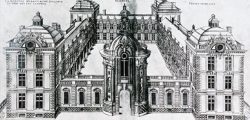Salomon de Brosse (1571-1626)
ArchitectBorn in one of the most renowned families of architects of the 16th century, Salomon de Brosse was the famous architect of the Luxembourg Palace (nowadays housing the Senate) for Marie de Médici. Among his many accomplishments should be mentioned the reconstruction of the best-known of Protestant churches built prior to the Revocation : the Reformed church in Charenton.
A Protestant family of architects
Salomon was the son of the architect Jean de Brosse, and the grandson of Jacques I Androuët du Cerceau on his mother’s side, and therefore the nephew of Jacques II Androuët du Cerceau. He was born in 1571 at Verneuil-en-Halatte in a family of Huguenot architects. He probably began his training within the propitious and eminent family circle. Towards the very end of the 16th century he participated in the last construction campaign for the Castle of Verneuil (no longer existing), of which his grandfather du Cerceau was in charge. In 1597, he was present on the building site of the castle of Monceaux with his uncle Jacques II Androuët du Cerceau. After the Edict of Nantes, his family settled in Paris. He died in December 1626, and was buried in the Protestant cemetery of Saint-Germain.
The well-known, late and noteworthy
We are acquainted with his work accomplished after 1610 only. By then he was very much solicited.
- Civilian architecture. At the time, he had several orders : in 1612 the castle of Bléancourt (Oise) which was to be completed before 1619 and of which only the side entrance pavilions still exist today ; in 1613 the castle of Coulommiers (Seine-et-Marne) built for Catherine de Gonzague, duchess of Longueville, but destroyed since ; in 1615 the Luxembourg palace for Marie de Médici, somewhat altered but still standing and today housing the Senate. Salomon’s plastic interplay with volumes, and his taste for bosses can be seen on the Luxembourg and Bléancourt castles which likewise denote Salomon’s good acquaintance with Italian Renaissance architecture. Despite the modifications effected during the 18th century, the façade of the Brittany Parliament in Rennes, begun in 1618 and today housing the court of justice, is an indication of the same aspirations. But it is Bléancourt that markedly opened the way to a classical notion of the castle as it was to be developed by François Mansard.
- Religious architecture. The façade of the church of Saint-Gervais in Paris is of the same period – 1616. This was the first religious building in France to display a superimposition of architectural patterns. And finally Salomon de Brosse should be remembered for the reconstruction of the Reformed church in Charenton, after 1623, according to the indications of his uncle Jacques II Androuët du Cerceau.
Bibliography
- Books
- BLUNT Anthony, Art et architecture en France, 1500-1700, Macula, Paris, 1983
- COOPE Rosalys, Salomon de Brosse and the Development of the Classical Style in French Architecture, A. Zwemmer, London, 1972
- DUBIEF Henri et POUJOL Jacques, La France protestante, Histoire et Lieux de mémoire, Max Chaleil éditeur, Montpellier, 1992, rééd. 2006, p. 450
- LAURENT René, Promenade à travers les temples de France, Les Presses du Languedoc, Millau, 1996, p. 520
- PANNIER Jacques, Un architecte français au commencement du XVIIe siècle : Salomon de Brosse, C. Eggimann, Paris, 1911
- REYMOND Bernard, L’architecture religieuse des protestants, Labor et Fides, Genève, 1996
- Articles
- COOPE Rosalys, "History and Architecture of the Château of Verneuil-sur-Oise", Gazette des Beaux-Arts, 22767
- GUICHARNAUD Hélène, "Approche de l’architecture des Temples protestants construits en France avant la Révocation", Études théologiques et Religieuses, Institut Protestant de Théologie, Montpellier, 2000, Tome 75
Associated notes
-

The Edict of Nantes (1598)
This was Henri IV’s major achievement : the terms of this edict ensured the peaceful coexistence of Catholics and Protestants and brought a stop to all hostilities in France after 36 years... -

Charenton (Val-de-Marne)
This was one of the major works of Salomon de Brosse, the architect who designed the Palais du Luxembourg (Senate) for Marie de Médicis (1623). -

Jacques I Androuët du Cerceau (before 1520-1585 or 1586)
The influence of his many publications on architects was immense. He refused to convert to Catholicism despite his attachment to the King of France. -

Jacques II Androuët du Cerceau (c. 1550/1560-1614)
Jacques II Androuët du Cerceau was present on construction sites launched by Henri IV towards the end of the 16th century. He is especially known as the architect of the...


